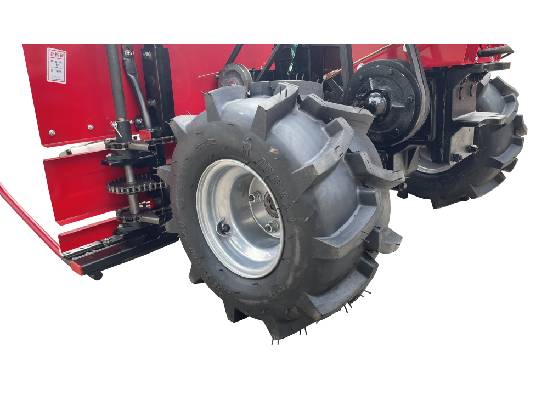rice and wheat harvester machine
The Advancements in Rice and Wheat Harvester Machines
In the modern agricultural landscape, the efficiency and effectiveness of harvesting crops have dramatically improved with the advent of advanced machinery. Among these innovations, rice and wheat harvester machines have emerged as pivotal tools for farmers around the globe. Their evolution from simple manual tools to sophisticated machinery has played a crucial role in increasing agricultural productivity, ensuring food security, and enhancing the livelihoods of rural communities.
Historical Context
The traditional methods of harvesting rice and wheat often involved labor-intensive processes, including manual cutting and bundling. This not only required enormous manpower but was also time-consuming and often led to significant post-harvest losses. The introduction of mechanical harvesters in the early 20th century marked a turning point in agricultural practices. The initial models were bulky, expensive, and primarily suited for large-scale farming operations. However, their development laid the groundwork for the more efficient, specialized machines we see today.
Modern Rice and Wheat Harvesters
Today's rice and wheat harvesters come equipped with a variety of features designed to maximize efficiency, minimize waste, and ensure sustainability. These machines typically combine several functions—cutting, threshing, and collecting—into one seamless operation. Modern harvesters are often categorized into two main types self-propelled and tractor-mounted.
1. Self-Propelled Harvesters These machines are equipped with their own engines and offer greater maneuverability. They are ideal for fields with varied terrains and can easily navigate around obstacles, making them suitable for rice paddies that may have standing water. They come with adjustable cutting widths, allowing farmers to adapt to different field sizes and shapes.
2. Tractor-Mounted Harvesters This type of harvester is attached to a tractor and relies on the tractor's power for movement and operation. Tractor-mounted harvesters tend to be more affordable and are used by many small to medium-sized farms. They are versatile and can be adapted for use in fields where space is limited.
Technological Innovations
The integration of technology into harvester designs has revolutionized the way rice and wheat are harvested. Modern machines often feature GPS tracking, which assists in precise navigation and reduces overlap, ensuring that every inch of the field is covered without redundancy. Additionally, many machines are equipped with sensors that analyze crop density, moisture levels, and overall field conditions. This data helps farmers make informed decisions, such as when and where to harvest, ultimately improving yield quality.
rice and wheat harvester machine

Another critical innovation is the shift toward automation and robotics. Autonomous harvesters are entering the market, reducing the reliance on manual labor and increasing efficiency. These machines can operate around the clock, completing harvesting tasks faster and with less human intervention. As labor shortages become more common in agriculture, these autonomous solutions are poised to become essential.
Economic Implications
The impact of rice and wheat harvester machines extends beyond just the individual farm level. On a broader scale, their efficiency contributes significantly to national economies by enhancing food production and stability. As countries strive to meet the food needs of growing populations, investing in advanced harvesting technology becomes increasingly vital.
Farmers using modern harvesters experience reduced labor costs and increased output, thereby improving their profitability. Moreover, as these machines are often designed to minimize crop damage during harvesting, they lead to lower post-harvest losses, ensuring that more of the crop reaches the market. This is particularly important in regions where food security is a concern.
Sustainability Considerations
While the benefits of modern harvesting technology are clear, there are also environmental considerations to address. The use of large machinery can lead to soil compaction and degradation if not managed properly. Therefore, it is essential for farmers to adopt sustainable farming practices that consider long-term soil health alongside technological advancements.
Moreover, as the agricultural sector continues to face challenges related to climate change, there is a pressing need for machines that not only enhance efficiency but also reduce the carbon footprint. Innovations such as hybrid or electric harvesters are beginning to emerge, representing a step towards more sustainable agricultural practices.
Conclusion
The evolution of rice and wheat harvester machines signifies a remarkable advancement in agricultural technology. As these machines become increasingly sophisticated, they play a crucial role in enhancing productivity, ensuring food security, and supporting the economic viability of farming. By embracing these innovations while also considering sustainability, the agricultural sector can pave the way for a more efficient and responsible future. As we look ahead, the challenge will be to balance technological advancements with environmental stewardship.
Latest news
-
When to Upgrade Your Old Forage HarvesterNewsJun.05,2025
-
One Forage Harvester for All Your NeedsNewsJun.05,2025
-
Mastering the Grass Reaper MachineNewsJun.05,2025
-
How Small Farms Make Full Use of Wheat ReaperNewsJun.05,2025
-
Harvesting Wheat the Easy Way: Use a Mini Tractor ReaperNewsJun.05,2025
-
Growing Demand for the Mini Tractor Reaper in AsiaNewsJun.05,2025







